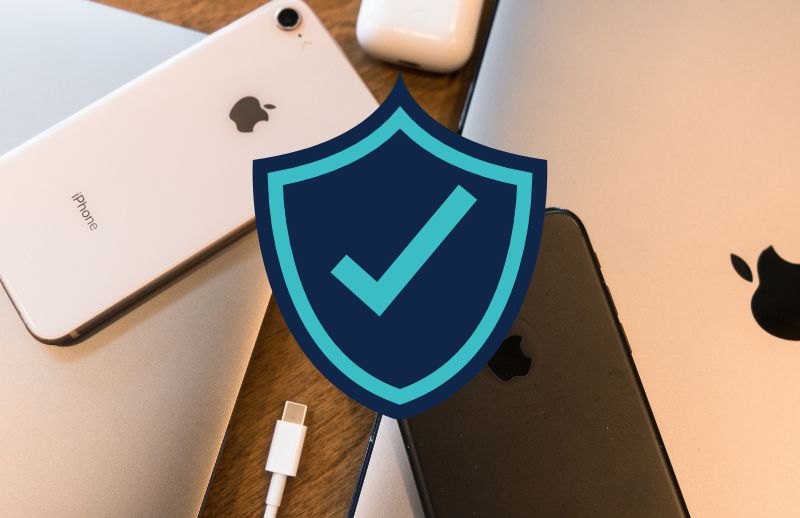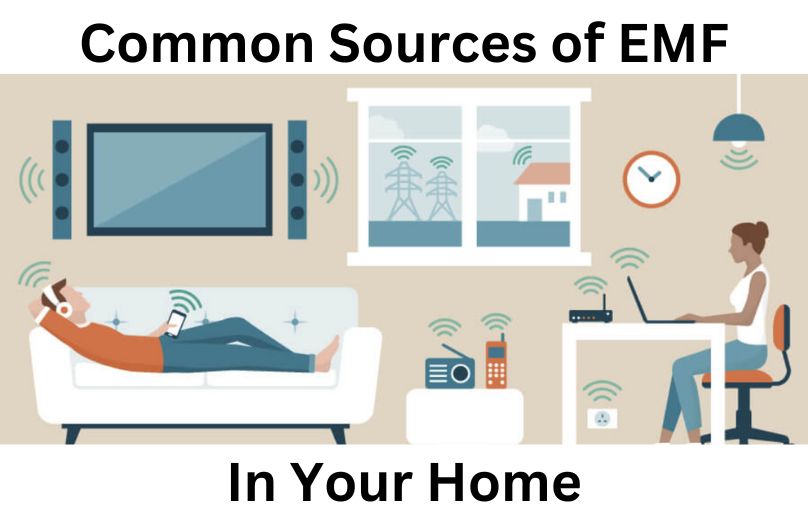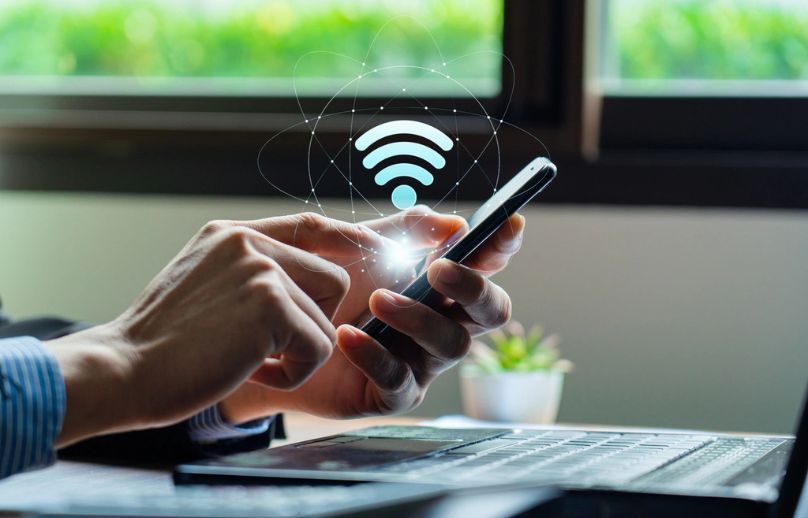Wireless earbuds are convenient, stylish, and popular. There’s a reason over 150 million pairs of AirPods have been sold so far. They’re everywhere! If you don’t have a pair, your teenager most likely has them.
But are they safe? There’s a reason many Doctors, scientists, and researchers are against them and why there’s no way I would ever use them. I choose to use EMF free headphones (air tubes) instead.
- RF Radiation From AirPods Explained Video
- Do AirPods Emit EMF Radiation?
- Do Bluetooth Earbuds Emit EMFs When I’m Not Using Them?
- AirPod Headaches
- Are AirPods and Wireless Earbuds Safe?
- Research on Bluetooth Safety
- What are the Safest Earbuds?
- Additional Issues with Wireless Earbuds
- Can Wireless Headphones Damage Your Hearing?
- Control The Settings On Your Phone
- Your Ears Need A Break
- Germ Covered Earbuds
- Safer Choice – Switch to Air Tubes
- Resources
RF Radiation From AirPods Explained Video
Do AirPods Emit EMF Radiation?
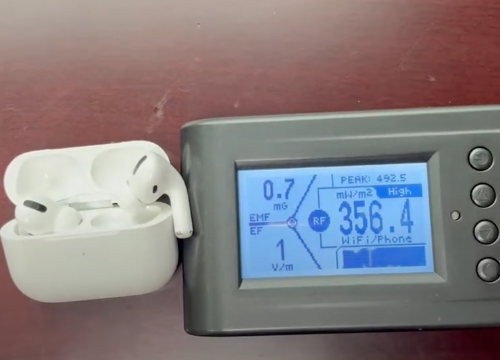
Wireless earbuds and headphones connect to an audio source through Bluetooth (sometimes 2.4 GHz). These signals hop around to different frequencies 1600 times per second.
So yes, AirPods and all wireless earbuds emit constant radio frequency (RF) radiation, a type of electromagnetic field radiation (EMF).
Signals Too Close To Your Brain
What’s most concerning about the EMF emissions is that the signals are being transmitted right next to your brain.
True wireless earbuds (no wire connecting the earbuds) also send a magnetic signal between the two earbuds. This means a Bluetooth signal and magnetic field is going from one ear canal to the other. The only thing in the way is your brain.
Do Bluetooth Earbuds Emit EMFs When I’m Not Using Them?
Your device is continually trying to pair to your device like your cell phone or laptop. It’s not shut off like you might think.
I don’t know about you, but I constantly see people with one or both pods in their ear even though they’re not listening to anything. I don’t think I’ve seen my teenage nephew without a little white thing in his ear in a year!
How many hours a day are you absorbing RF waves straight into your skull?
AirPod Headaches
There are hundreds of complaints of headaches after prolonged use of wireless earbuds. I’ve had messages about them and I’ve read about them on social media and in forums. Now this could be from pressure from wearing the earbuds for so long.
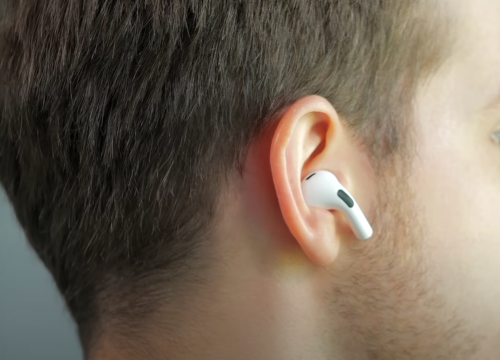
But a strong possibility is that the headaches are connected to the EMF Radiation so close to your head. Headaches are one of the most common symptoms of EHS (electro-hypersensitivity), a condition connected to EMF exposure.
Are AirPods and Wireless Earbuds Safe?
Well given the info on the amount of EMF exposure next to your brain, what do you think? Dr Joel Moskowitz, a public health professor at the University of California, said in an interview, “We are playing with fire here… You are putting a microwave-emitting device next to your brain… It’s like we keep rediscovering that Bluetooth is harmful and trying to forget it.”
But Apple products meet or exceed safety requirements set by the FCC.
The FCC has mandated SAR (specific absorption rate) limits. SAR measures how much radiation is absorbed by a person. So these limits are a way to control how much radiation electronic devices can emit.

However, many scientists, groups, and organizations argue that these standards are NOT adequate for human safety and are fighting to change this.
Even the WHO has classified EMF Radiation (including Bluetooth) as a possible carcinogenic and have listed studies that show high amounts of RF radiation can increase risk for brain cancers, including glioma and neuroma.
Research on Bluetooth Safety
Unfortunately very little research has been done on Bluetooth safety, according to a petition to the UN and WHO by 250 scientists from over 40 countries.
Dr Moskowitz comments in the article that, “I would argue you shouldn’t experiment with your brain like this by keeping these kinds of wireless headphones on your head or in your ears.”
What are the Safest Earbuds?
The safest earbuds are air tube headsets (my favorite ones). These are low EMF earbuds that actually produce sound through a hollow air tube. The speaker is not next to your head, meaning you’re not exposed to magnetic radiation.
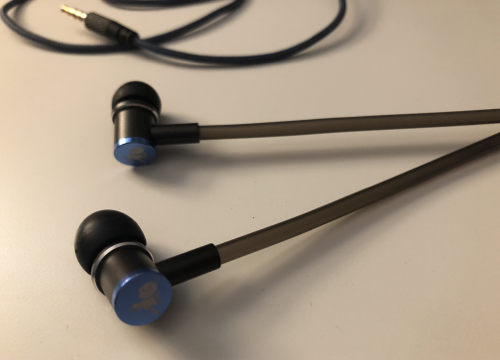
They don’t have Bluetooth, batteries, microchips and take extra precautions to protect you from EMFs.
The next best option is wired over-ear headphones. The safest choice, even though it’s not convenient is to stick to wired earbuds and use them as little as possible.
Additional Issues with Wireless Earbuds
For me, the biggest issue with wireless earbuds is the EMF Radiation they emit and the risk associated with absorbing that RF radiation so close to your head.However, there are other issues with this technology that are also important to be aware of, like hearing loss and ear infections.
Can Wireless Headphones Damage Your Hearing?
Approximately one in five teenagers today will experience some kind of hearing loss, according to the American Osteopathic Association. This is a 30% increase from what was expected 20 years ago.

This is due to listening through earbuds at a high volume for extended periods of time and can cause lifelong, irreversible hearing loss. They don’t have noise isolation so you keep turning up the volume to block out sounds around you.
If you can’t hear anything around you, the decibel level from your earbuds is too loud.
- Signs of hearing loss include:
- Ringing, buzzing, roaring in the ears
- Muffling of sounds
- Trouble hearing high pitched sounds (doorbell, birds, whistles)
- Asking people to repeat themselves often
- Difficulty hearing when there are a lot of background sounds
- Listening to music or watching TV at a higher volume than other people need
Hearing loss is serious. If you are reading this and thinking, yeah I have some of these, connect with your Dr or an Audiologist to get checked out.
Control The Settings On Your Phone
Avoid hearing loss by keeping the volume down. An easy way to do this is to use volume-limiting headphones or set a hard volume limit in the settings of your mobile phone. There’s a section for headphone safety.

Your Ears Need A Break
The key to protecting your hearing is prevention and it’s actually pretty easy. Keep the volume of your devices to a max of 60% and keep your earbud usage to about an hour or less a day. It’s the 60/60 rule.
Headphones that go over your ear are a safer choice than the earbuds that go right into your ear canal.
And kids should really only be using over the ear headphones. Check out DefenderShield’s Airtube headsets for kids. These would be my top recommendation for kids headphones and what my daughter uses.
Germ Covered Earbuds
Wireless earbuds are a breeding ground for germs, bacteria, dirt, and sweat. Prolonged use can also trap earwax inside your ear, causing impacted earwax and trapping moisture behind the wax.
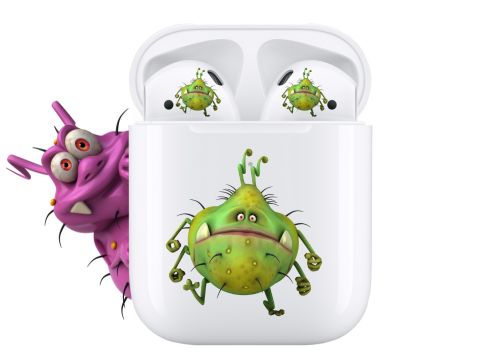
These are all recipes for ear infections, irritation, and pain. It’s no wonder Dr’s are seeing more ear infectionsin teenagers and young adults.
- Ear infections are awful. It’s best to avoid them by doing the following:
- Clean your earbuds with alcohol wipes regularly (think daily)
- Use them for shorter periods of time
- Switch to over ear headphones
- Give your ears time to dry after a shower before using them
- Store your earbuds in their clean case and try not to handle them too much
Make sure to seek medical treatment as soon as there’s a problem. Ear infections can be very serious.
Safer Choice – Switch to Air Tubes
Avoid the EMF Radiation and health risks from Bluetooth headphones by switching to safer headphones, air tube headsets. They use a wired connection, although there are wireless options available and take extra steps to reduce your EMF exposure.
Use over-ear headphones to reduce your risk of hearing loss and infections. And try to limit the amount of time you wear them.
With the little research on Bluetooth safety and RF radiation exposure so close to your brain, it’s just not worth the convenience wireless earbuds offer. You can find my top recommendations for air tube headsets here that take into account sound quality, comfort, price, and more. I’ve tested them myself.
Resources
https://kidshealth.org/en/teens/earbuds.html
https://www.health.harvard.edu/blog/healthy-headphone-use-how-loud-and-how-long-2020072220565

